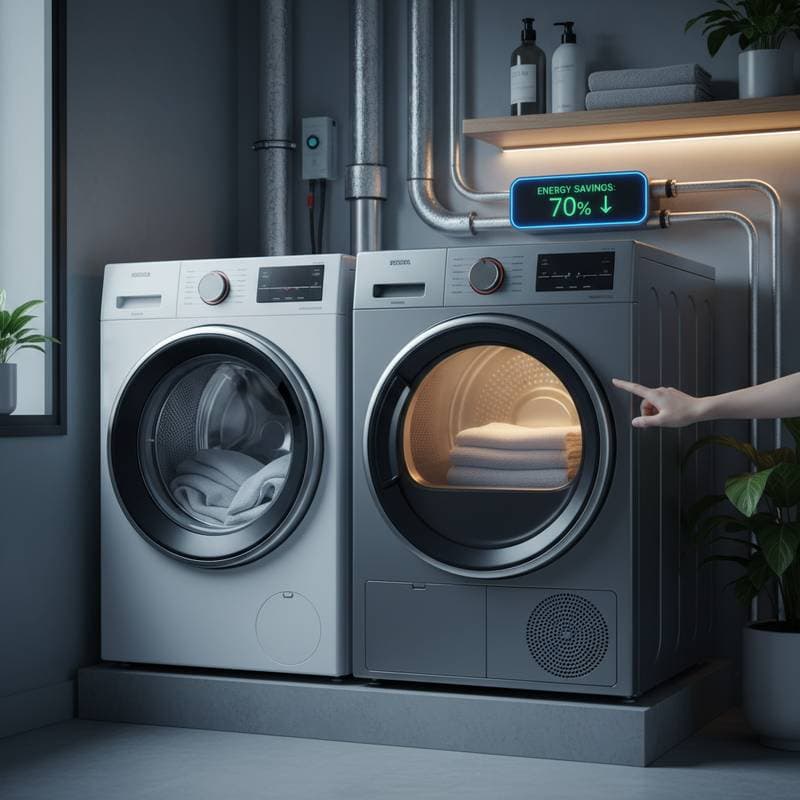Key Points
- Attic insulation upgrades reduce household energy expenses by 15 to 30 percent.
- Spray foam and hybrid systems effectively seal air leaks and minimize thermal bridging.
- Effective air sealing, ventilation, and moisture control complement insulation depth for optimal results.
- Smart sensors and reflective coatings represent emerging enhancements for superior energy performance.
- Strategic attic retrofits improve comfort, longevity, and market value concurrently.
Understanding the Attic's Role in Energy Efficiency
Review your latest energy bill and note any unexpected increase. The cause often resides in the attic above, an area filled with stored items that profoundly affects home energy use. Heat escapes through unsealed ceilings and thin insulation layers, compelling heating and cooling systems to work harder.
This inefficiency parallels heating a room with open doors. Contemporary insulation materials paired with air-sealing methods transform the attic from a cost center into a source of significant savings.
Benefits of Attic Improvements
Energy savings start at the top of the home. Warm air rises, positioning the attic as the primary escape route for heat in winter and a trap for excess warmth in summer. Strengthening this space cuts energy use, reduces emissions, and stabilizes indoor temperatures year-round.
Improved insulation curbs temperature swings, limits moisture buildup, and muffles outside noise. From a real estate standpoint, a well-insulated attic boosts property value, as buyers increasingly seek energy-efficient homes.
These upgrades deliver returns of 60 to 120 percent on investment. This calculation does not include ongoing reductions in heating and cooling costs.
Essential Planning Elements
Before adding insulation, assess key factors to secure lasting performance.
- Air Sealing: Locate and close gaps around recessed lights, ductwork, and joints with expanding foam or caulk. This measure keeps conditioned air in living areas.
- Moisture Control: Humid air condenses on cold surfaces, promoting mold. Use vapor retarders and promote airflow to protect the structure.
- Ventilation Strategy: Attics need balanced air movement. Place intake vents at eaves and exhaust vents at the roof peak to manage temperature and humidity.
- Addressing Thermal Bridging: Wood framing transfers heat past insulation. Apply spray foam to framing or install rigid foam boards over rafters to block this path.
Investment Costs and Return Projections
Costs for attic upgrades vary by material and whether professionals handle installation.
- Fiberglass Batts: Expect $1 to $2 per square foot, offering an accessible and economical choice.
- Blown-In Cellulose: At $2 to $3 per square foot, this fills irregular spaces and works with existing setups.
- Spray Polyurethane Foam: Ranging from $3 to $6 per square foot, it provides superior sealing and moisture resistance.
Fiberglass or cellulose setups typically save 10 to 20 percent on annual energy bills. Spray foam achieves 30 percent or more. While spray foam costs more upfront, it combines sealing benefits and demands minimal maintenance for decades.
Projects often recoup expenses in three to six years, depending on local energy prices and climate. Savings continue long after payback.
Practical Design Enhancements
Attic updates go further than insulation alone, incorporating useful modifications.
- Elevated Storage Platforms: Construct raised sections above insulation for item storage without compressing thermal barriers.
- Radiant Barrier Installation: Attach foil-faced sheets under roof sheathing to reflect solar heat and ease cooling loads.
- Conditioned Space Expansion: Insulate the roof rather than the floor to blend the attic into heated or cooled living zones.
- Integrated Sensors: Install units that monitor temperature and humidity, delivering live data and alerts for upkeep.
Basic steps, like insulating hatch panels with rigid foam and sealing edges, yield measurable efficiency gains.
Eco-Friendly Options and Performance Boosts
Choose robust materials that support sustainability. Select items certified by programs like ENERGY STAR for low emissions and proven results.
- Recycled Cellulose Insulation: Made from processed paper waste, it requires little energy to produce and excels at soundproofing.
- HFO-Blown Spray Foam: This uses eco-friendly blowing agents to create long-lasting, airtight seals.
- Reflective Roof Coatings: Such applications lower roof temperatures by 25 percent, cutting air conditioning needs.
Pair these with solar panels or fine-tuned HVAC systems to heighten savings and environmental gains. Treat them as interconnected parts of a unified efficiency plan.
Project Variables to Consider
Several factors shape the extent and outcome of an attic project.
- Current State Assessment: Water-damaged or pest-infested insulation might need full removal prior to reinstallation.
- Regional Climate: Cold areas require thicker insulation, while hot regions gain from reflective treatments.
- Access Challenges: Tight or intricate layouts increase labor and costs.
- Code Compliance: Follow local rules on insulation thickness and ventilation requirements.
Perform a full energy audit to identify weaknesses and focus on high-return fixes.
Common Questions Addressed
How can you determine if attic insulation requires updating?
Visible joists, drafts around lights, or moisture signs point to inadequate insulation. Uneven room temperatures or pest activity also signal the need for action.
Is self-installation feasible for insulation?
Homeowners can manage fiberglass batts or blown cellulose with safety gear. Professionals ensure even spray foam coverage and mitigate health hazards.
Does spray foam create excessive airtightness in attics?
Proper setup with ventilation maintains equilibrium, avoiding trapped air. Designs that include airflow prevent moisture problems.
Do mild climates justify attic insulation investments?
Yes. Less strain on systems and consistent comfort deliver benefits, with savings building over time even if yearly effects seem modest.
Sustaining Efficiency Through Ongoing Monitoring
After implementation, track results via bill patterns and sensor readings. Regular checks preserve performance and catch small problems early. These steps secure lower expenses and a more durable, comfortable home for the long term.










